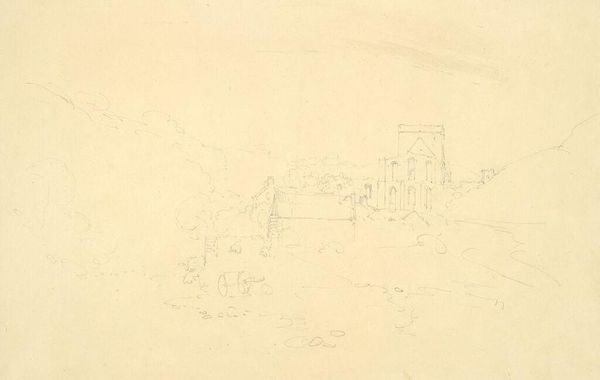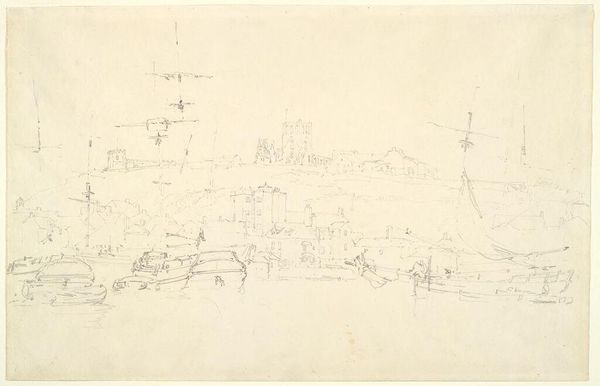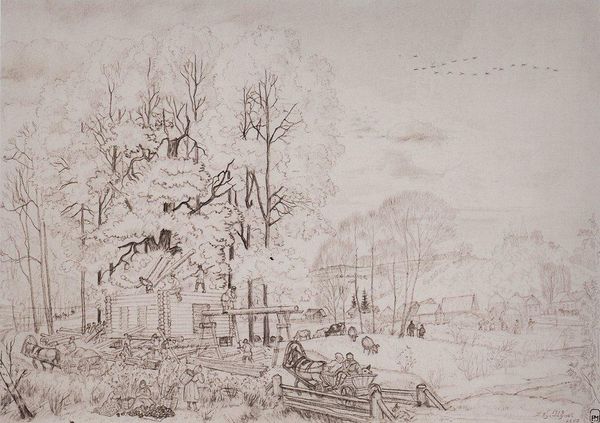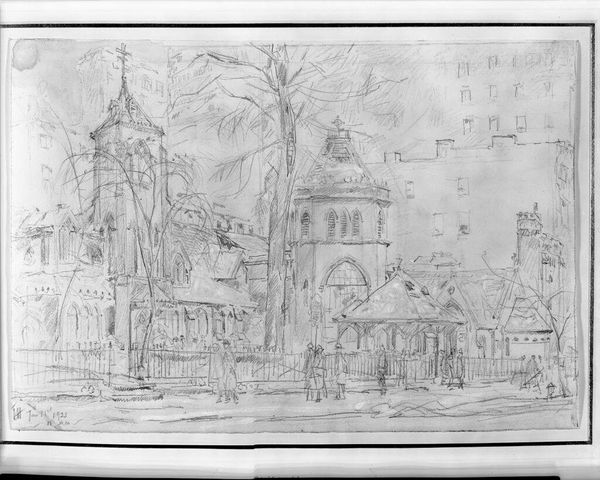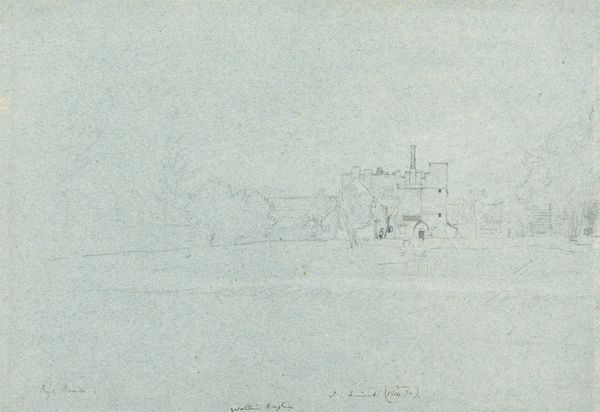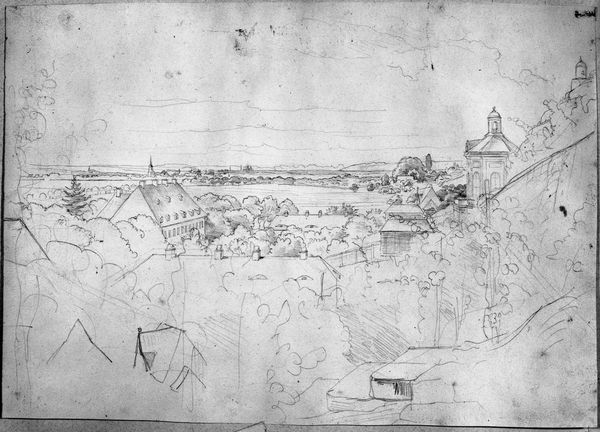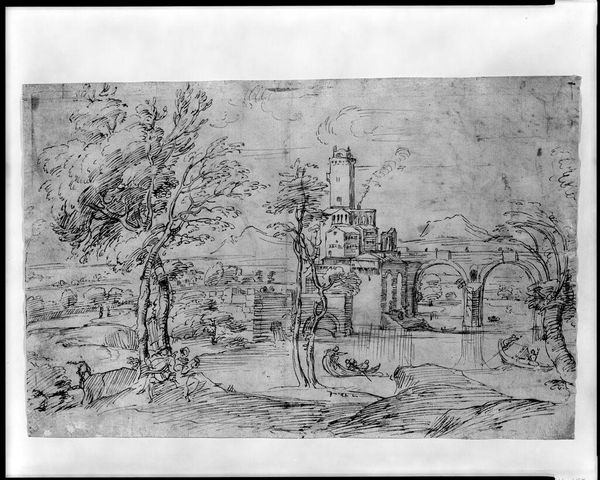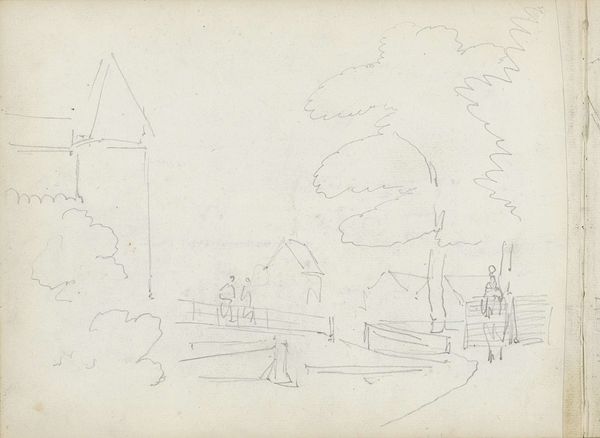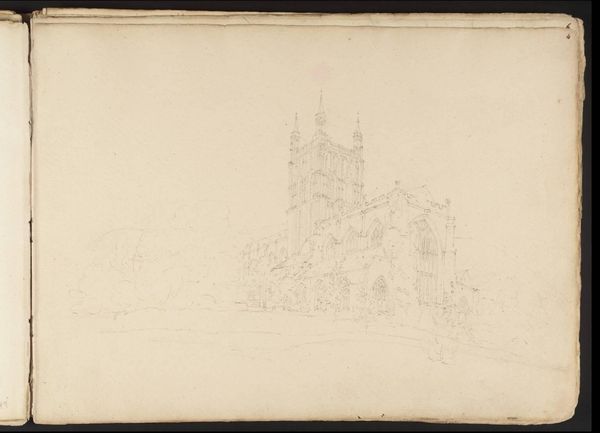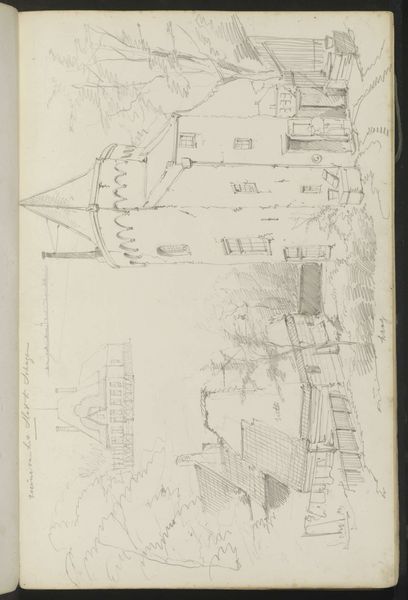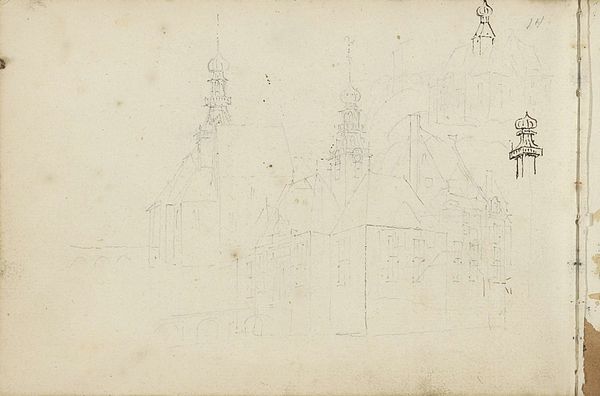
drawing, pencil
#
tree
#
drawing
#
amateur sketch
#
thin stroke sketch
#
quirky sketch
#
incomplete sketchy
#
landscape
#
house
#
idea generation sketch
#
sketchwork
#
detailed observational sketch
#
pencil
#
rough sketch
#
scratch sketch
#
cityscape
#
initial sketch
Dimensions: 11 7/8 x 13 3/4 in. (30.2 x 34.9 cm)
Copyright: Public Domain
Editor: So, here we have William Rimmer's pencil drawing "Home Sweet Home," made sometime between 1816 and 1879. It's incredibly delicate. What stands out to me is the bare quality of it – a quick sketch capturing a moment. What can you tell me about this piece? Curator: As a materialist, I find it fascinating to consider the socioeconomic factors shaping the production of this "sketch." Rimmer, working with humble materials like pencil and paper, perhaps scraps, is immediately indicating the circumstances of production. Notice the landscape theme too: whose 'home' is being idealized and how did materials like pencil and paper become more democratized over the century to be used for a concept sketch such as this? Editor: I see what you mean. So, it’s less about the ideal of "home" itself, and more about the *accessibility* of representing that ideal through readily available materials? Curator: Precisely. This sketchy, 'incomplete' quality isn't just an aesthetic choice. Consider how rapidly industrialization reshaped notions of domesticity and the availability of materials in the 19th century. How readily someone had access to materials and time shaped this kind of artwork. Do you think a wealthier patron would settle for a sketch like this? Editor: That’s a good point! Maybe they would commission a painting or a more elaborate piece. This drawing, with its imperfections, speaks to a different kind of engagement with the concept of "home." Curator: Exactly. It's about the act of sketching itself, the labor involved, and what that reveals about social class and artistic creation in a changing society. Editor: Wow, I hadn’t considered all that. Looking at the rough marks now, I see so much more. It is about who is doing the creating. Curator: Yes, thinking about "home" in terms of labor and access unlocks a different understanding. Material availability defines the context, revealing insights often overlooked. Editor: This gives me a lot to think about for future gallery visits. Thanks for sharing!
Comments
No comments
Be the first to comment and join the conversation on the ultimate creative platform.

